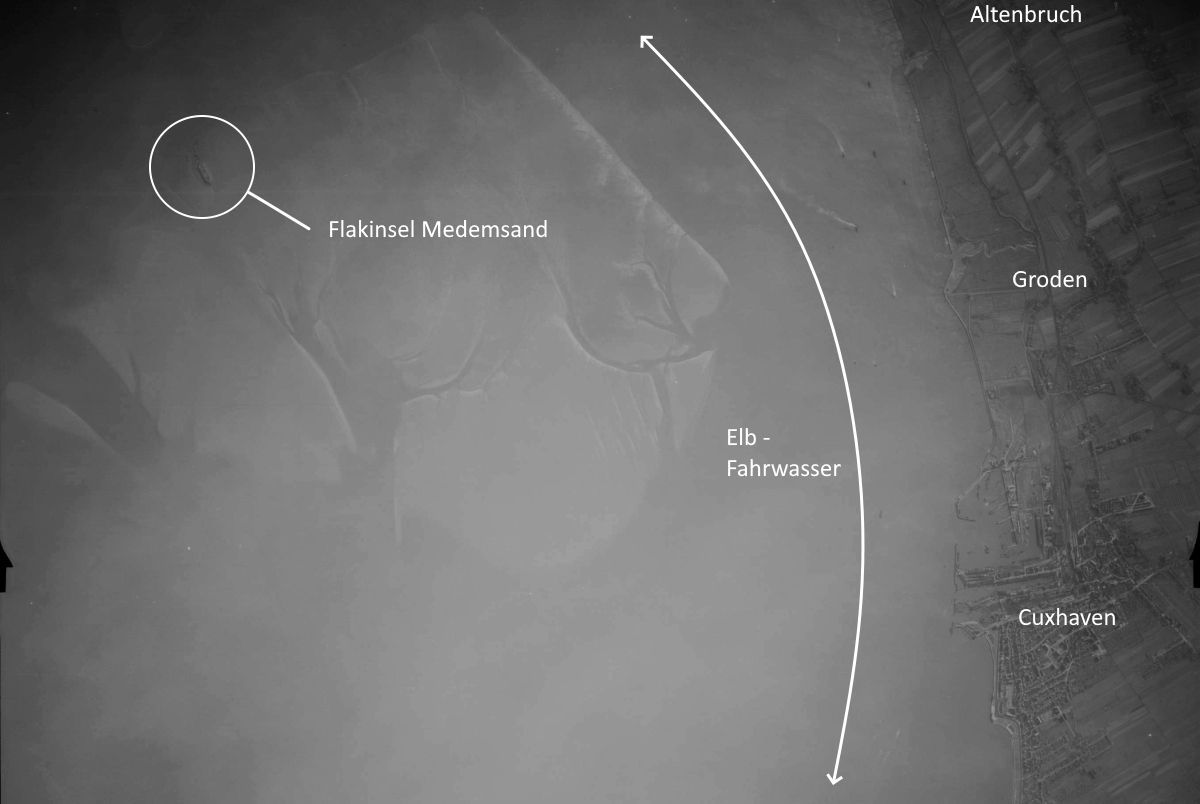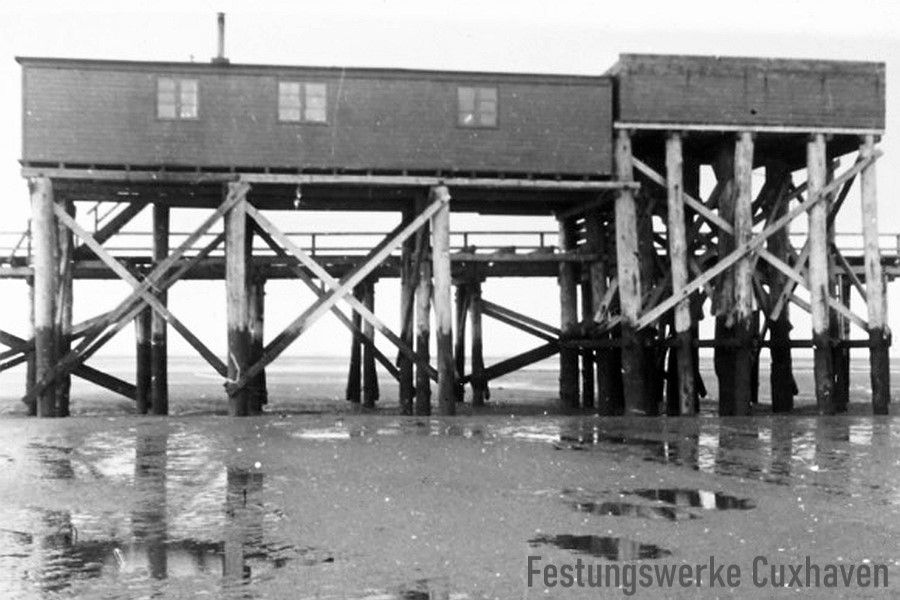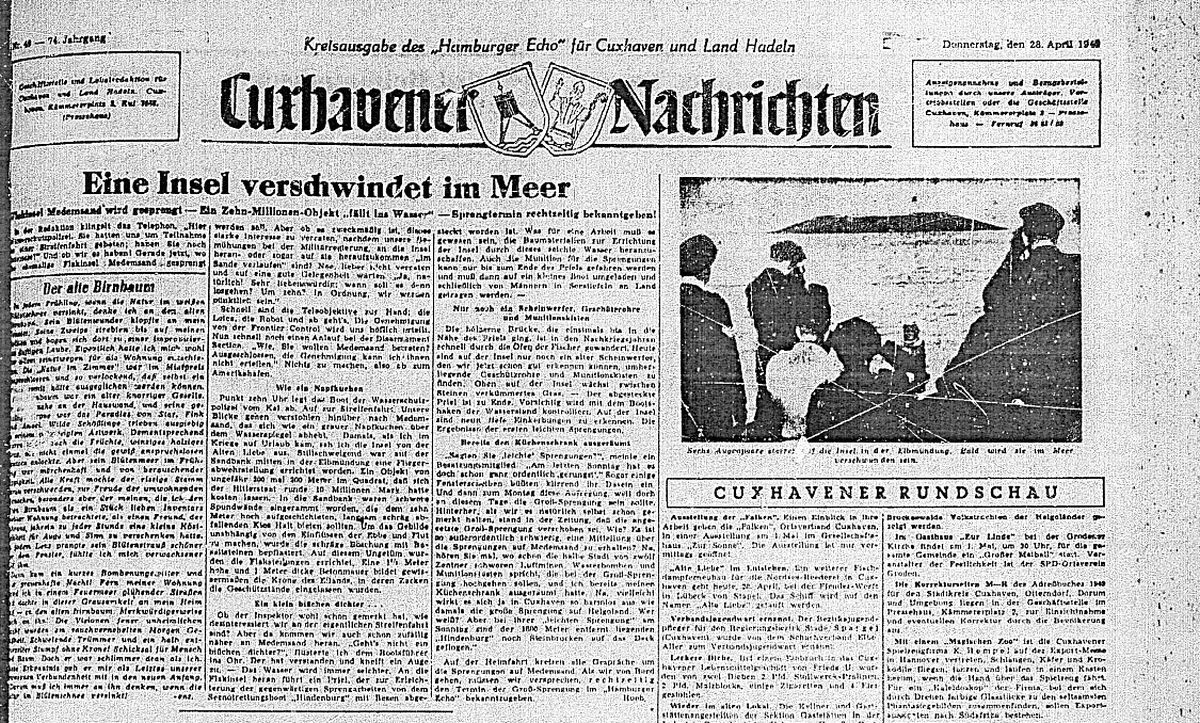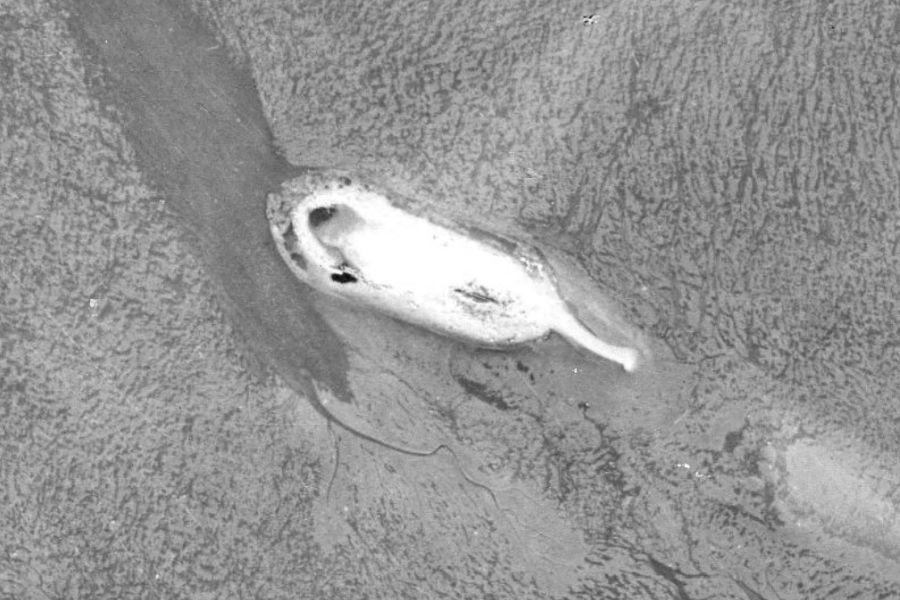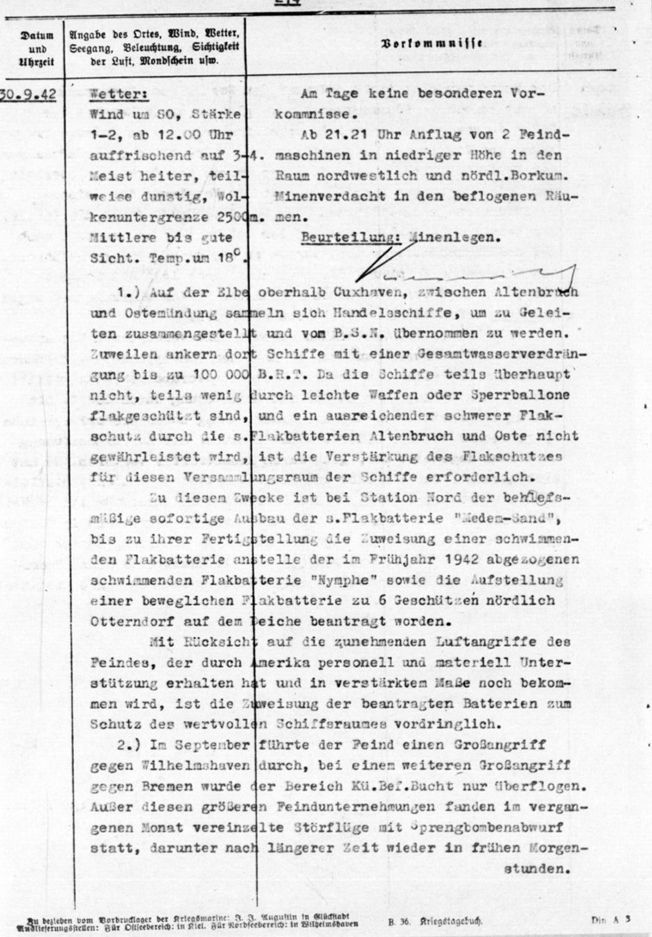
During the Second World War, the Altenbruch roadstead on the Elbe in front of Cuxhaven was a gathering point for German convoys departing from there. The ships waiting there were mostly protected from air raids by boats from the 4th/Harbor Protection Flotilla. In addition, there were the outpost boats and anti-aircraft fighters accompanying them on the convoy routes. From land, a certain level of protection was only provided by the Altenbruch and Groden naval anti-aircraft batteries, although the dyke proved to be a hindrance to defence against very low-flying enemy aircraft. At the urging of the naval command in Cuxhaven, the floating anti-aircraft battery Nymphe was anchored as anti-aircraft protection in the Klotzenloch, a deep gully in the middle of the Elbe, from the end of 1941. At the same time, however, work had already begun on building an artificial island on the "Medemsand" sandbank in order to provide permanent protection against low-flying aircraft. According to plans by the Navy, the work on building the anti-aircraft island on Medemsand was carried out by the Todt Organization and the Marine Pioneers (location - RAD camp Sahlenburg), and construction took place from 1940 to 1942. The difficulties involved in transporting materials to the island were not too great due to the distance from the port of Cuxhaven, but were due to the tidal range and the required transport capacities. Nevertheless, the building was soon completed after the reinforcing iron, cement, sand, gravel, etc. had been transported. The ammunition bunkers and crew quarters for each gun, as well as the fire control station belonging to the battery, were built in the form of a fortress. The outer edges of the island were enclosed by a vertical steel sheet pile wall that reached up to the height of the average high tide. The steel wall was adjoined by slopes paved with basalt blocks at an angle of around 30°. The subsoil of the island itself consisted of sand, earth and probably gravel. On the southeast side of the Flak Island there was a jetty around 100 m long on wooden piles. Field railway tracks were laid on it, which served to supply the anti-aircraft soldiers stationed there. In total, the structure protruded around 10 meters from the ground, was around 100 meters long and 20 meters wide. At the top it was closed off with a wall a good 1.5 meters high and 1 meter thick as protection against projectiles and splinters. The Tönning Waterways Authority was in charge of construction of the project, and the construction was carried out by Claus Rohwer/Rendsburg and Robert Looft/Wilster. The cost of the construction work was reported to be around 10,000,000 Reichsmarks. The plan was to set up a battery with three medium-weight (3.7 cm), five light 2 cm anti-aircraft guns and four heavy 12.8 cm Flak 40s at this location. According to Meinert, the battery commander was Lieutenant Hugo Jessen from Cuxhaven-Groden. The military responsibility for the Medemsand anti-aircraft island was under the 6th/Marine Artillery Division 214 in Cuxhaven. Its head of operations was Lieutenant Captain MA of the Reserve Dr. jur. Hans Nebelsiek. He himself visited the island several times to oversee the progress of the construction work and the installation of the planned armament. According to the war diaries of the commander in the Cuxhaven sector, only light weapons up to a maximum of 4 cm are described on the anti-aircraft island, plus a small anti-aircraft searchlight. Guns of heavy calibers, as planned, are not mentioned at all. There is also no reference to an alleged "Würzburg Riese" measuring device that was supposed to have been stationed on Medemsand. According to war diaries, the island was listed as the 11th gun of the 6./M.FlA.A 214, and from May 22, 1944, a 3.7 cm and a 4 cm anti-aircraft gun were mentioned on Medemsand. In 1949, on the orders of the British occupying forces, some explosions were carried out on the island. The result was several deep trenches that now divided the island. At the instigation of the Otterndorf road construction department, parts of the basalt blocks were removed and later used in post-war road construction. Some of the foundations of the positions as well as a dilapidated log cabin and bunker remains could still be seen in the eastern part of the island until the end of the 1950s. In the middle of the island stood a 7 m high steel tower on which a beacon used to burn.Source: MB, Gerd Wildfang, https://de.wikipedia.org/wiki/Medemsand

An enlargement of photo 1 with the massive structure and the wooden landing bridge.
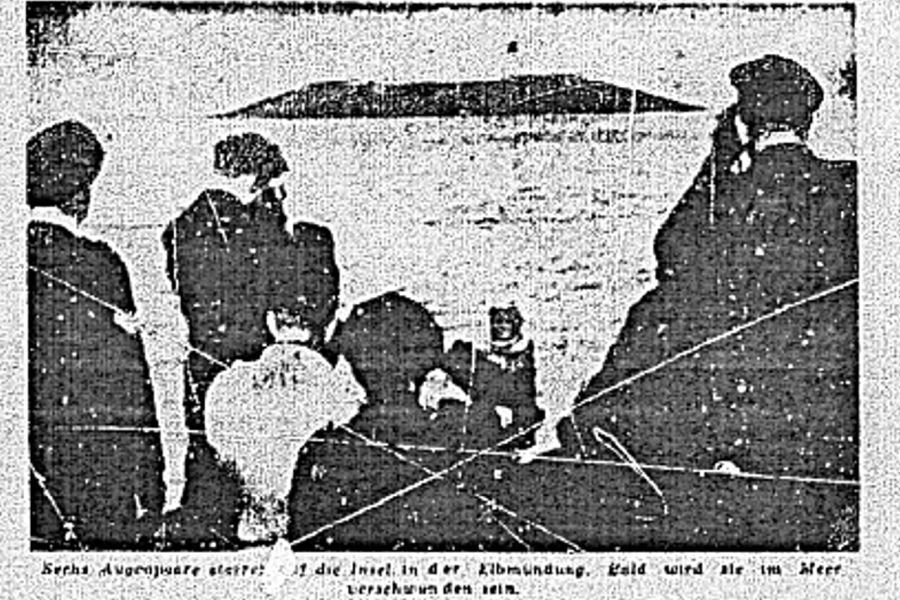
Probably the only current photo showing the Flak Island during the blasting work in 1949. Unfortunately, the quality of the photo is poor. Text under the photo: "Six pairs of eyes stare at the island in the mouth of the Elbe. Soon it will have disappeared into the sea."



